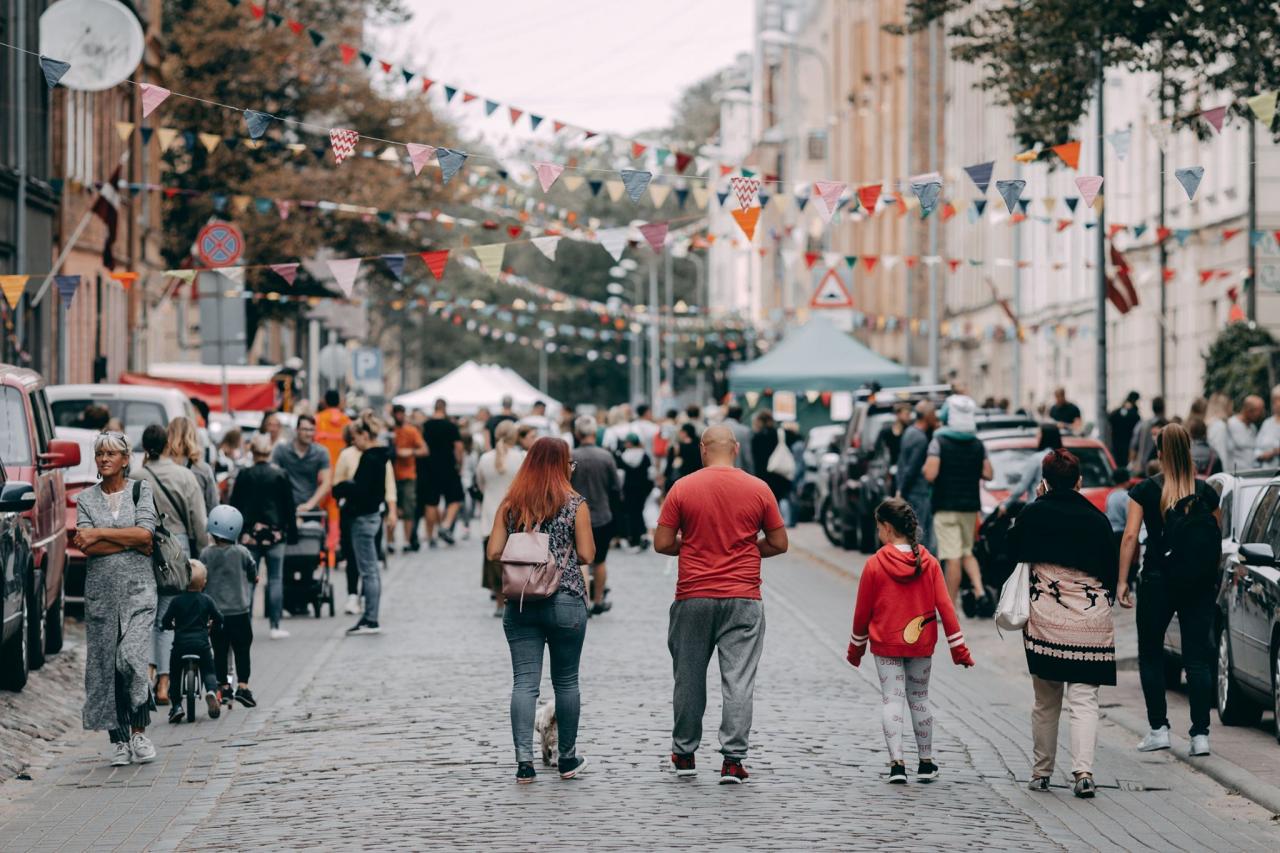
In the recent years, the idea of neighbourhoods has developed rapidly in Riga, targeted activities are organised, focusing the interests and needs of the community of a particular neighbourhood, several neighbourhood associations have been established. We invited for a conversation Guntars Ruskuls, the author of the implementation of the neighbourhood idea and platform, Head of the Strategic Management Board of the Riga City Council’s Department of City Development.
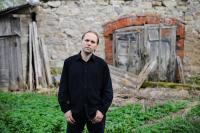
Guntars Ruskuls, Head of the Strategic Management Board of the Riga City Council’s Department of City Development. Author of the photo Kristaps Kalns
What are the origins of the neighbourhood concept, “apkaime” in Latvian?
The term “neighbourhood” had been used for quite some time already in the Western world, and we, actually, have taken it over as the translation of the English term – a neighbourhood. Of course, also previously the spatial perception of the city used such terms as a borough or catchment area; however, the definition of neighbourhood expands the concept, emphasizing also the importance of the local community. The Rig City Council’s Department of City Development explains the concept of the neighbourhood as a populated environment of an appropriate size, which has its own services, identity and nature, which follow from the type of constructions, physical boundaries, landscape and the residents’ sense of community.
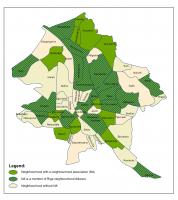
Division of Riga into 58 neighbourhoods
How did the idea of neighbourhoods appear in Riga? What was the purpose of it?
In 2007 Riga City Council City Development Department has undertaken the work to research of Riga neighbourhoods and determine the boundaries. Riga City Council specialists of different sectors have been involved in the concept, each with a specific view of Riga neighbourhood’s development. Neighbourhood development concept is integral and it associates those interests of specialists, which emphasizes the unique variety of Riga territories, which consists of geographic location, differences in cultural history heritage and diversity in social layers. Initially, we, as planners, were thinking more about collecting analytical information. To monitor the development processes, Riga had to be divided into territorial units that were smaller than suburbs. We invited prominent experts and presented the idea to them, and they said that the idea was very good but there was only one but – why had we forgotten about people. Then we also gave this idea a totally different meaning, underscoring the integration of local society – the communities – in the city. From the perspective of planning, the purpose of this platform is, by defining neighbourhoods, to create pre-conditions for implementing a balanced social-economic and spatial policy within the administrative territory of the city of Riga.
Please describe briefly the neighbourhoods of Riga.
They are different both as to their sizes and functions, 58 in total. Spatially Riga is monocentric city, where the city historical centre is the most active and the most saturated place, concentrating inwardly the most important city functions. Nevertheless, Riga does not start and end with the central part of the city. While the functions accomplished and the range of services offered in other city regions and residential neighbourhoods are incomparable, however, the functional and cultural history importance of these city territories is also very significant.
Riga is a large metropolis in the dimension of Northern Europe. Riga occupies 304,05 km 2 large area with more than 630 thousand inhabitants, but with agglomeration it occupies ~7 000 km² with ~1,1 million inhabitants, that is a half of all Latvian population. Doubtless such a large city cannot be seen merely as one entirety, therefore various parts of Riga in different historical stages, historically, geographically, administratively and statistically have acquired their names, boundaries and identity. Often these territories initially have been manors, hamlets or villages, which are later added to Riga (Bolderāja, Bišumuiža and others). Later when the boundaries of Riga equilibrated and these small urban units became a part of the big city, in different geographic maps their name and approximate boundaries were retained. During the time of the first Latvian Republic these boundaries have already served as statistical units. During the Latvian Soviet times residential complexes (building estates) – the main structural elements of residential buildings, which were composed of several residential house groups and everyday culture and household institutions, have developed. Residential streets and district level trunk-lines normally enclosed residential complexes.
Nowadays city spatial detailedness is not only the question of city planning or building character. The communities, ethnic and cultural features, society social stratification or marginalization, safety, the various services offered and, of course, importance of dwelling types and urban planning are much discussed.
We have multi-functional neighbourhoods as the city centre, with almost 70 000, jobs and typical bedroom suburbs. The origins and genesis of each neighbourhood also determine the surrounding landscape. For example, in Buļļi or Vecdaugava you will still find an authentic fishermen’s pier. Whereas Pļavnieki, Imanta, with their multi-apartment buildings and yards packed with cars, will remind you that you are in the largest city of the Baltic region.
City Development Department of Riga City Council is working a lot with the neighbourhood concept. Could you, please, share initiatives you work with?
City Council introduced publicly available www.apkaimes.lv portal, which contains detailed and regularly renewable set of facts about the geographic situation, history, inhabitants and their occupation, social and business infrastructure, the activities of Riga City Council and other important topicalities in each neighbourhood. Initially the idea of a neighbourhood platform served for analytical purposes. Developing the neighbourhood idea further the City Council decided to change its approach to focus more on communities. The City Development Department provides several promotional activities, such as neighbourhood forums, as a result, many geographical NGOs were established in Riga. A lot of NGOs have become a mediator between local citizens and the City Council. From the 58 neighbourhoods of Riga, more than 20 has neighbourhood NGOs, some of them have joined the Neighbourhood Alliance, which represents the interests of more than 200,000 rigans. Riga's Neighbourhood Alliance is a non-governmental organisation and was founded with a mission to strengthen the role of the important stakeholders for the Riga city administration – communities living in neighbourhoods represented by the organised structures - in the city development processes. The main achievement of the Neighbourhood Alliance is the introduction of participatory budgeting in Riga, which the municipality is implementing for the second year in a row by allocating 500,000 euros for neighbourhood related projects.
Neighbourhood platform is used for a variety of purposes, such as urban planning, community development, culture and the arts, education and research, historical narratives, urban landscaping, real estate development and funding for neighbourhood related project ideas.
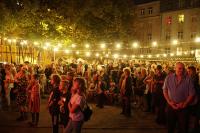
Neighbourhood celebrations in Brasa
Which neighbourhoods of Riga are currently most active? Their most visible achievements?
In my opinion, currently – Āgenskalns, Brasa, Čiekurkalns, Vecmīlgrāvis and Sarkandaugava. In Āgenskalns, of course, Kalnciems Quarter is active with its creative events and venue for gathering. Now various movements are developing also around the historical centre and market of Āgenskalns, including the Association of Āgenskalns Neighbourhood. The Hospital Street’s Festival is held in Brasa, the community actively participates in various societal integration projects. The work of the association Čiekurkalns Neighbourhood resulted with a new children's playground created in Čiekurkalns. The association also solves issues, as well as the possibilities of establishing a neighborhood park. They also organize clean-ups, art events and fairs. Vecmīlgrāvis has taken a slightly different path and collaborates with the Free Port of Riga. The major achievements are the public space at the Daugava River, which has been won, and the grim fence of the Free Port has been made more attractive, covered by children’s drawings. Sarkandaugava has become the hottest neighbourhood of the last 5 years. Various cultural events and events for community engagement are held there, Aleksis Square is now well-maintained Now it is the turn for Aldaris Park, which will be a good addition to the creative quarter developing in the territory of Aldaris Factory.
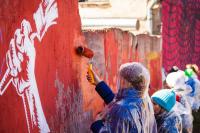
Involvment of children in neighbourhood activities in Sarkandaugava
How can socially active residents of Riga and representatives of non-governmental organisations participate in the development processes in the neighbourhoods?
The Education, Culture and Sports Department of the Rig City Council has several support programmes both for the active neighbourhoods and the creative quarters. These are very significant instruments, initiated by the municipality, but, of course, communities can organise themselves and look for supporters among their members. The main lines of activities are neighbourhood festivities, clean-up days, meetings, discussions of development ideas, etc.
Purvciems neighbourhood, within the boundaries of which the NGO House is situated, could be one of the largest in terms of population. How can the residents there find a common language?
Yes, with its almost 60 000 inhabitants it is the largest neighbourhood. To compare – Purvciems could be the fifth largest city in Latvia. In fact, to establish a socially active, widely represented movement of residents is a problem in neighbourhoods as large as this. Recently an association has been established in Purvciems, and it has a lot to do to consolidate the residents of this neighbourhood. We have good examples in Bolderāja and Vecmīlgrāvis, but usually the nature of constructions determine a lot. In the large neighbourhoods, the meeting centres should be defined. Perhaps the NGO House in Purvciems could provide the necessary premises for the more active residents to meet for discussing future intentions for the neighbourhood. “Association for Sarkandaugava’s Development”, for example, gathers at the centre for children and youth “Laimīte”, communities of Grīziņkalns and Avoti – in the premises of the centre for restoration of wooden buildings “Wooden Riga”. To my mind, the capacity of municipal libraries is still underestimated, they have good territorial coverage.
How can residents express their opinion or state their attitude about the problems in urban environment to make living in Riga and its neighbourhoods more convenient and pleasant?
The Department of City Development has organised meetings in neighbourhoods about the new spatial plan of Riga. Likewise, we have organised the so-called “neighbourhood guides” – walked through the neighbourhoods, guided by the local residents, heard about the problems and agreed on issues that needed to be solved. With the support of the Education, Culture and Sports Department, each year a competition of financing is held for organising neighbourhood forums. I believe that this could be a good beginning for consolidating the neighbourhood’s residents. The year of 2019 was significant, as the programme of participatory budgeting was launched in Riga. As in the pilot year, several issues and problems emerged, however, the main thing, it raised great interest among the residents of neighbourhoods.
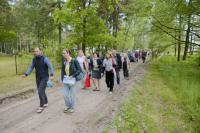
Surveying neighbourhoods together with residents. “Neighbourhood Guide”. May 2015
How do you see the development of neighbourhoods?
The optimal solution would be bringing the municipal services closer to residents. I also wish that a community would evolve in each neighbourhood, by finding a strong leader and developing a dialogue with the Riga City Council, closest neighbourhoods and developers wishing to implement projects. “Educating” developers about the history and context of the place is also a task for the neighbourhood’s community. In this way, the new projects also will respect the identity of the place and will add in a harmonious way to the existing urban environment and landscape.
You responded to the NGO House’s invitation and became involved in the work of the local support group of URBACT project “The Riga NGO House – Collaboration Platform for Organisations and the Municipality”. What are your reflections on this participation?
Participation in the project “ACTive NGOs” is valuable and enriching, both from the perspective of local-level activities and international events. I participated in a seminar in Spain, Santa Pola, where many practical and interesting examples were presented regarding the mapping of civic initiatives, development of cooperation networks, and methods for promoting community engagement were demonstrated. The presentation by the expert from Madrid Miguel Jaencike was especially inspiring. The expert demonstrated examples of mapping civic initiatives as an opportunity for identifying in cities or their neighbourhoods societal activities, initiatives, non-governmental organisations, and public spaces. The civil society, mapped or networked like this, allows municipalities to understand the topics that are relevant for the residents, their priorities, and also allows organisations to join forces in community development events. We are gradually implementing some of the ideas that were presented in our work with the neighbourhood movement. I shall be happy to continue following the project activities.
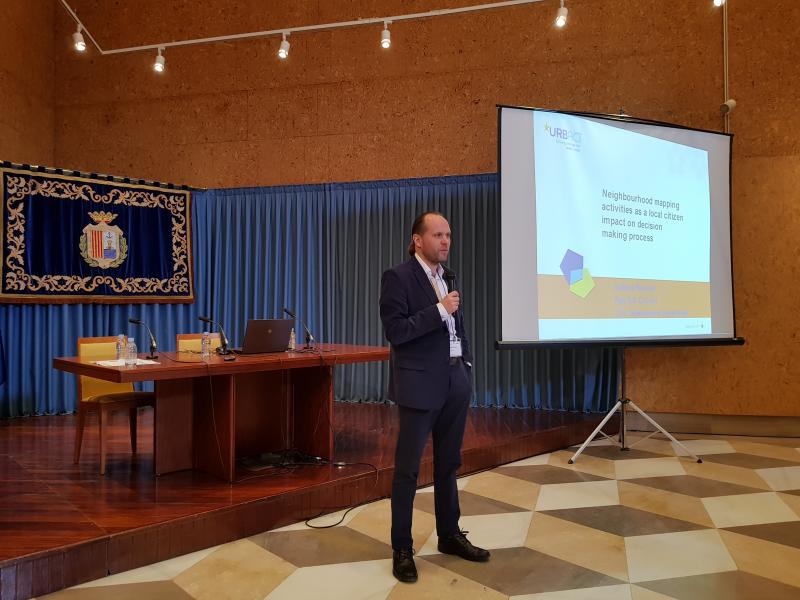
Presentation of Riga neighbourhood concept during the transnational seminar of the project in Santa Pola, Spain in February 2019
Thank you for this conversation.
Interviewer: Zinta Gugane, project coordinator of the NGO House

